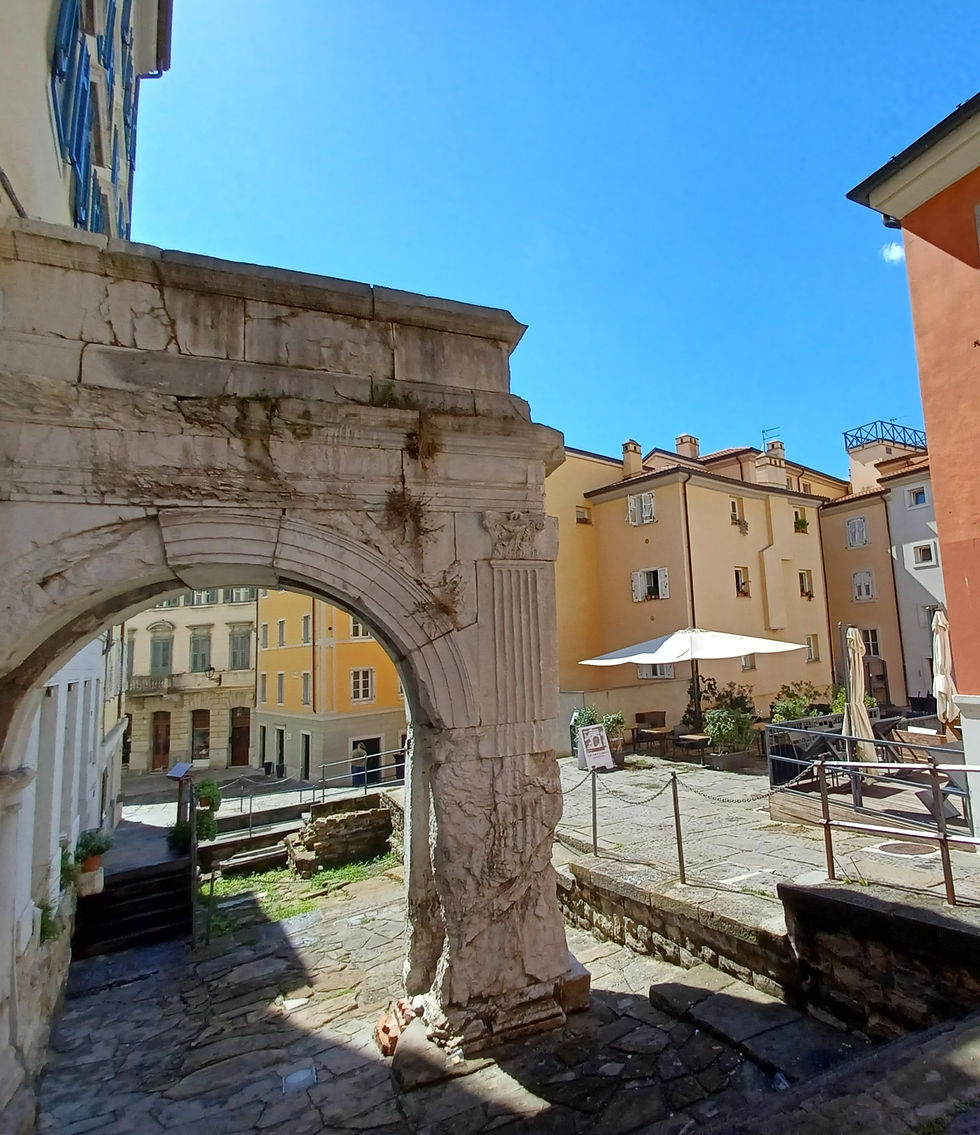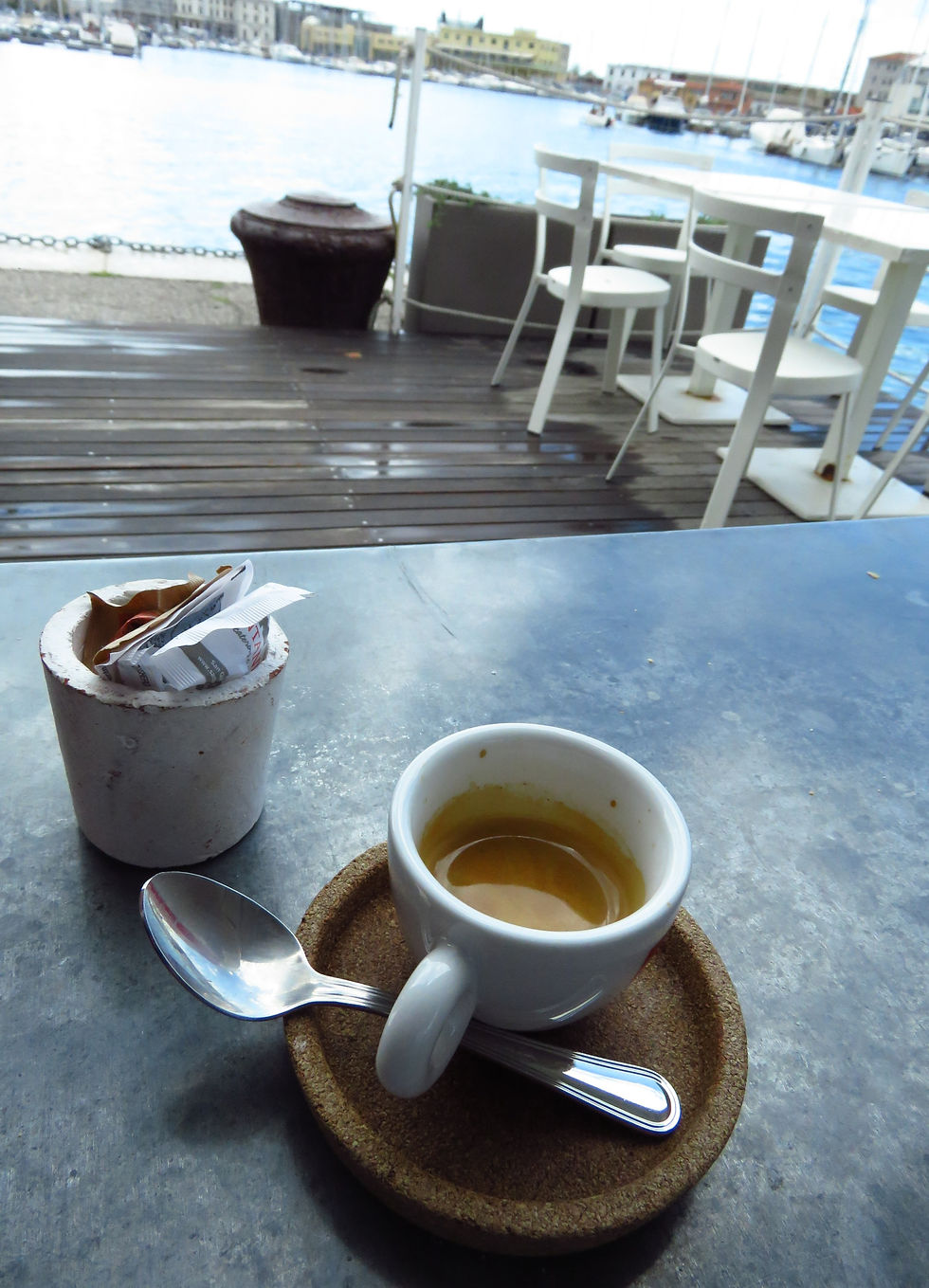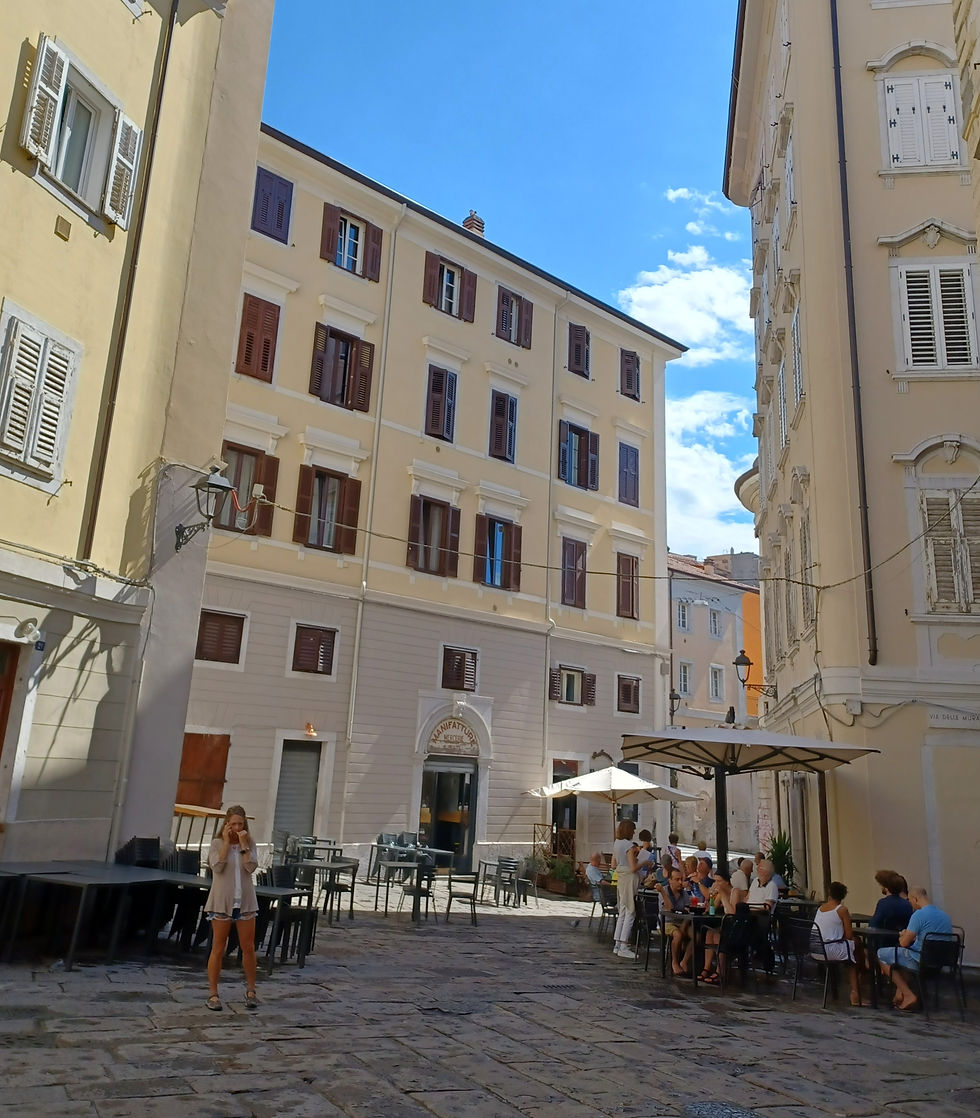Trieste - Italy's Grand, Adriatic Port
- Mangia Mangia

- Sep 30, 2022
- 5 min read
Updated: Feb 28, 2025
Italy's prominent port with a rich, diverse culture.

The grand city of Trieste is capital of Italy's furthest north-eastern region - Friuli Venezia Giulia. Due to an autonomous status, the region isn't subdivided into provinces and celebrates its uniquely diverse character as a whole. Here, a blend of Slovenian, Croatian, Austrian, German and Italian cultures seem to co-exist with ease, resulting in an interesting mix, in architecture, language and cuisine.
Trieste is a deep water port boasting a prominent position on the northern tip of the Adriatic sea and a sure stop on any Med cruise with a ship or two always docked in the harbour. Europe's largest seaside piazza opens up before her visitors, lined with resplendent Neo Classical palazzi and busy cafes as Trieste's well known wind, the Bora, whips through wide streets where a sense of faded majesty and grandeur rattles shutters and shifts shadows in the darkest of corners.
What to see
Trieste's charm lies in the underrated Italian art of 'il dolce far niente'. In Trieste, the so-named 'City of Coffee', you're enticed by piazzas and grand streets stacked with endless amounts of chairs and tables to simply sit. Visit Trieste to amble and relax, sit and sip your coffee, to take in the views from San Giusto, enjoy an aperitivo and simply 'do nothing' - fare niente.

Trieste doesn't feel like a tourist destination, you won't find many sights to tick off your must-see list but if you'd like some suggestions, here are a couple of things we can recommend:
Piazza Unità d'Italia - it seems fair to start on the enormous, central piazza where you'll also find a tourist information point with advice and maps worth picking up if you plan to catch a bus or get out of town.
Wander the long sea-side promenade noting old harbour structures and cruise ships docked beside glitzy bars and restaurants. We love Pier The Roof (pic below) for sundowner aperitivi on the roof or seafood lunch near the water. Read our review here.

Castello di San Giusto at the top of the hill overlooking the city has beautiful views. Either walk up or catch bus number 24 and remember to take 50 cent pieces to illuminate the cathedral's stunning mosaics. The fortress was built 500 years ago on the site of an ancient Roman temple as a formidable spot and strategic seat of the Austro-Hungarian empire. Beautiful remains of mosaics and affreschi hint at a bygone grandeur truly worth viewing.

Stroll back into town passing the Arch of Riccardo. Unassumingly wedged into charming, stone Piazza Barbacan, this sloping narrow-laned quarter of Trieste is known as Citta' Vecchia - the oldest part of town. There's a sleepy, lazy atmosphere during the day but these quaint piazze light up at dusk with quirky restaurants and live music - it's always worth spending an evening here.
The Roman Theatre, built in 1AD, sits below Citta' Vecchia and warrants a stop at (you'll pass by the ruins many times a day) and next we suggest you head out of town or tap into an antique coffee culture.
There are many gorgeous churches and palazzi in Trieste including the San Silvestro Basilica and Serbian Orthodox Church of San Spiridone. The beautiful Canal Grande dotted with fishing boats provides a sea-water entrance into the city headed by the impressive, neoclassical Sant’ Antonio Tramaturgo church, but to me, Castello Miramare has to be the most alluring piece of architecture in the area. Modern, compared with the rest of Trieste, this Gothic/Neo Renaissance castle was built for Archduke Maximilian of Hapsburg as his home jutting out into the sea. Of white Istrian stone, the 19th century castle is set in lush 22 hectare grounds stocking a range of exotic plants he collected himself. Catch bus 36 from the railway station - the grounds are open and free to visit all year round. Entry to the castle is €10 and a must! Expect its perfectly-preserved, lavish decor to transport you to faraway, fanciful places.

Trieste's coffee culture has a deep rooted history. As port and gateway, Trieste was historically fundamental in the supply of this sought-after drink. Home to Illy and Hausbrandt, theses two iconic coffee companies' antiquities have filtered into the very fibre of this city. Since the late 18th century, beautifully decadent Viennese coffee houses host writers, artists and intellectuals and you too can stop for coffee and cake to let their beguiling grandeur seep into your Trieste experience... try:
Caffè San Marco - since 1914 these high ceilings and ornate decor have offered up cakes and coffee in an iconic setting which now is also a bookshop!
The oldest cafe in Trieste (founded in 1825) - il Caffè degli Specchi on Piazza Unità, was once frequented by the likes of James Joyce.
Pasticceria La Bomboniera seems like a movie set - it's a treasure chest of krapfen (doughnuts), strudel, Sacher and presnitz (a local pastry filled with nuts, raisins, and cinnamon), serving divine coffee.
What to sample
As a melting pot of Slovenian, Austrian and Italian cuisines, the food here is something unique. Austria brings traditional goulash and Sacher cake to the table, Slovenia's jota (a national dish of sauerkraut and beans) features and then, of course the region of Friuli Venezia Giulia offers many a scrumptious plate. Try friko - a comforting cheese and potato dish or cjalsons - thick, herb ravioli, crumbed and smothered in butter.
Trieste is, after all, a seaside city so expect Adriatic Seabass (Branzino), Frittura Mista - crispy seafood delicacies or warm octopus salad.
Along with coffee culture, Aperitivo Time reigns supreme in Trieste... that's clearly what all the chairs and tables are for.
Aperol, Campari, Select, Cynar and Spritz Ugo are available as spritzes and you'll see them drunk everywhere. Your Apertivo will always come with nibbles like olives, tramezzini or crisps - it's the Italian way! So make time for this daily ritual, changing spots between drinks to experience true Triestino lifestyle in every corner of this city.

Where to stay
Like Trieste's varied culture, accommodation here offers up diverse options. Use your favourite booking app instead of the official tourism page for a better range. The city is well contained thus all central areas are easily accessible on foot, however, if I was to pick, I'd choose the area around Piazza Barbacan, but do note, the narrow lanes are mainly pedestrian and can be steep if your luggage is heavy.
For how long?
Many visitors to this grand city pop in and out on Cruise Ship Tours but Trieste is best enjoyed over a weekend, perhaps during December when the city glows in twinkly lights from Christmas markets or mid May for Olio Capitale - an important event dedicated to Extra-virgin Olive Oil - you can just imagine how sublime.
Transport
Trieste makes a wonderful 2 night stopover if you're on a driving holiday, want to break out of Venice or exploring Slovenia with the kids (lots of great caves in the area). We'd suggest taking your time here to enjoy the spaces and unique flavours of this often overlooked city. Fly in to close by Aeroporto Friuli Venezia Giulia, where Ryanair flies from the UK or catch the train up from Venice which is 2 hours and 15 euros away. You'll notice, the longer you stay, the more Trieste grows on you.
For information on events, best beaches, travel tips, exhibitions and Trieste's Film Festivals, refer to their official website here.










Comments